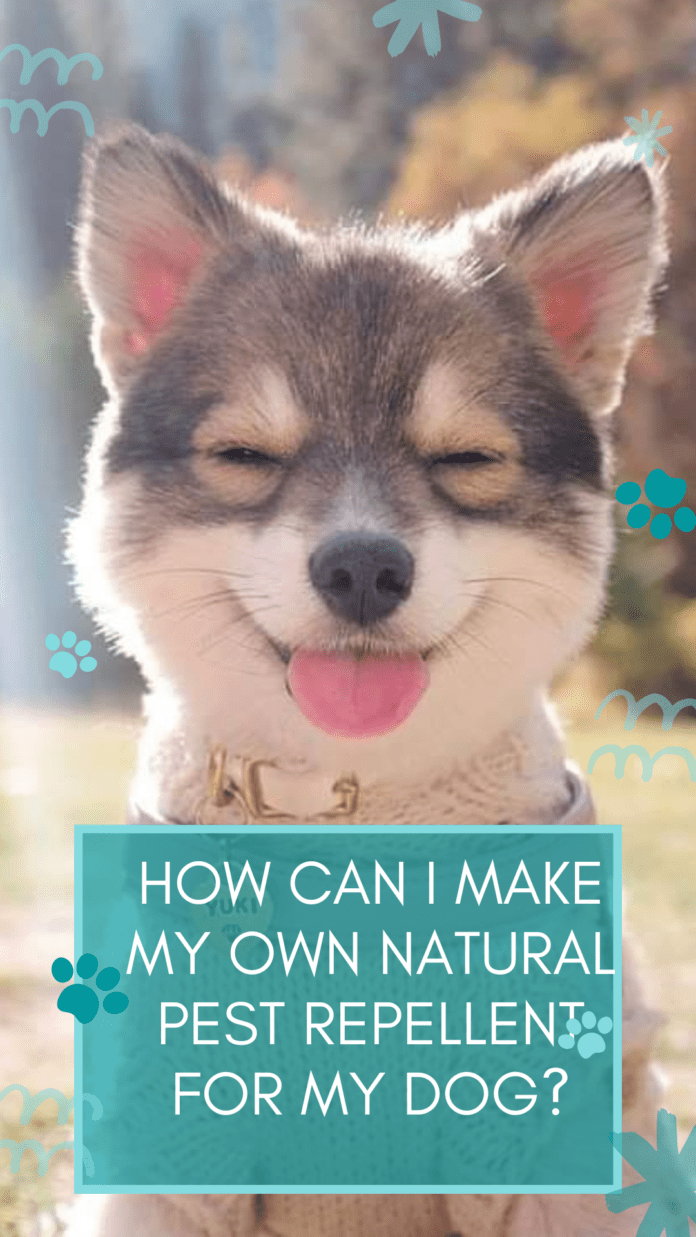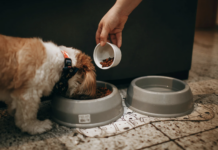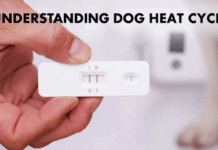Last Updated on July 26, 2024 by Dogs Vets
Ever come back from a walk in the park only to find your furry friend covered in pesky fleas, ticks, or mosquitoes? Those unwanted hitchhikers can not only be a nuisance for your pup, but they can also transmit diseases.
While commercial pest repellents exist, some pet owners prefer a more natural approach.
Creating your own DIY dog repellent is a great way to keep your pet safe from pests using ingredients you might already have on hand. It’s also a budget–friendly option that allows you to avoid harsh chemicals often found in store-bought products.
In this comprehensive guide, we’ll delve into the world of natural pest repellents for dogs. We’ll explore safe and effective ingredients, provide easy-to-follow recipes, discuss application methods, and answer frequently asked questions.
So, grab your mixing bowl and get ready to create a paw-some pest-repellent solution for your canine companion!
Why Choose Natural Pest Repellents?
There are several reasons why pet owners might opt for natural pest repellents:
- Safety Concerns: Some commercial repellents contain chemicals that can be harmful to dogs, especially if ingested. Natural ingredients are generally considered safer, although it’s always crucial to choose pet-safe options.
- Sensitivity: Does your dog have sensitive skin? Natural repellents are often gentler and less likely to cause irritation.
- Effectiveness: Many natural ingredients boast repellent properties that can effectively deter pests.
- Control Over Ingredients: When you make your own repellent, you know exactly what goes into it. This allows you to tailor the solution to your dog’s specific needs.
Important Considerations Before You Begin
Before we dive into the recipes, it’s important to address some key considerations:
- Always Consult Your Veterinarian: While natural ingredients are generally considered safe, it’s always best to consult your veterinarian before using any new product on your dog, especially if they have pre-existing health conditions or allergies.
- Patch Test: Before applying any repellent to your dog’s entire body, perform a patch test on a small area of skin, such as the inner leg. Wait for 24 hours to see if any irritation occurs.
- Choose the Right Ingredients: Not all natural ingredients are safe for dogs. We’ll provide a list of safe and effective options in the next section.
- Reapplication: Natural repellents typically don’t last as long as commercial products. Be prepared to reapply more frequently, especially after swimming or playing in tall grass.
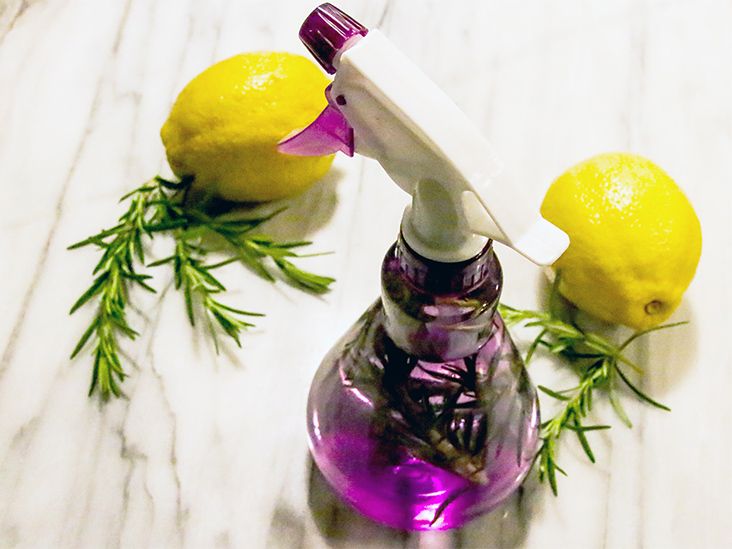
Safe and Effective Natural Pest Repellent Ingredients
Now, let’s explore some of the natural ingredients that can effectively repel pests from your dog:
- Apple Cider Vinegar (ACV): The acidity of ACV discourages fleas and ticks. It can also be used as a topical spray or added to your dog’s water bowl (diluted, of course!).
- Citronella Oil: This essential oil has a strong citrus scent that repels mosquitoes and other flying insects.
- Neem Oil: Extracted from the neem tree, neem oil boasts a variety of pest-repelling properties. It’s effective against fleas, ticks, mosquitoes, and even mites. Note: Neem oil can have a strong odor, so a little goes a long way.
- Lavender Oil: This calming essential oil not only deters fleas and mosquitoes but can also soothe existing insect bites.
- Cedarwood Oil: Cedarwood oil is another option for repelling fleas, ticks, and mosquitoes. Caution: Cedarwood oil can be toxic to some pets, so consult your veterinarian before using it.
- Peppermint Oil: The refreshing scent of peppermint oil repels fleas, ticks, and even ants.
Remember: When using essential oils, always dilute them properly with a carrier oil like coconut oil, sweet almond oil, or jojoba oil. A good rule of thumb is one drop of essential oil to 10-20 milliliters of carrier oil.
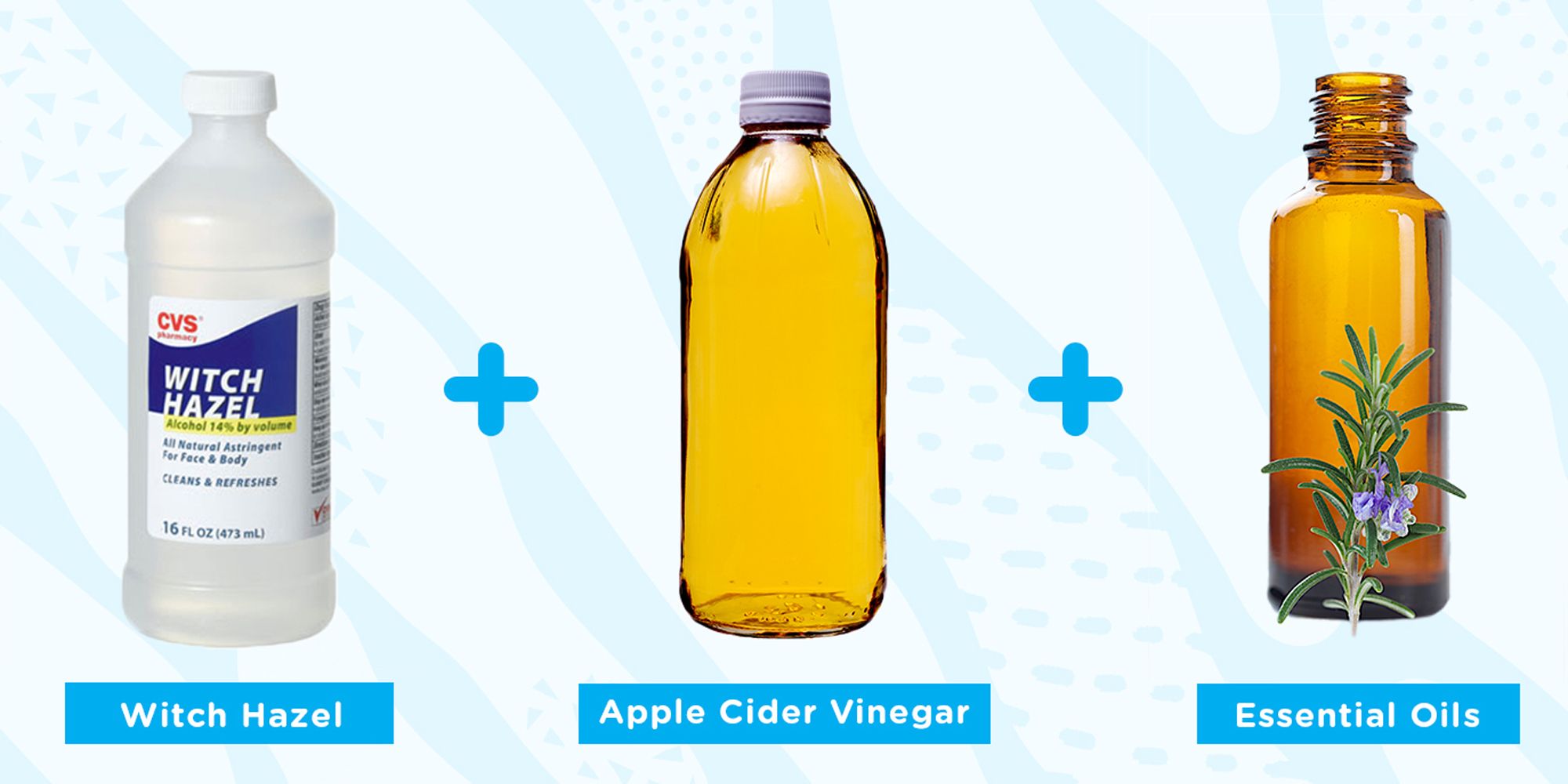
DIY Natural Pest Repellent Recipes
Now that you’re familiar with safe and effective ingredients, let’s create some natural repellents for your dog!
1. Simple Apple Cider Vinegar Spray
This is a basic yet effective repellent that’s perfect for beginners.
Ingredients:
- 1 cup apple cider vinegar (ACV)
- 1 cup filtered water
- Spray bottle
Instructions:
- Combine ACV and water in a spray bottle.
- Shake well before each use.
- Spritz your dog’s coat, avoiding the eyes and face.
Tip: The vinegar smell might dissipate after drying. You can add a few drops of a pet-safe essential oil, like lavender, for a pleasant fragrance.
2. Herbal Flea Repellent Spray
This recipe combines the power of several natural repellents.
Ingredients:
- 2 cups boiling water
- 1/4 cup dried rosemary
- 1/4 cup dried peppermint
- 1/4 cup dried lavender
- 2 tablespoons witch hazel (optional)
- 10 drops citronella oil (optional)
- Spray bottle
Instructions:
- Pour boiling water over the dried herbs in a heat-resistant container.
- Let steep for 1-2 hours.
- Strain the liquid into a spray bottle.
- If using, add witch hazel and citronella oil.
- Shake well before each use.
- Apply to your dog’s coat, avoiding the eyes and face.
Note: This recipe is for informational purposes only. Consult your veterinarian before using essential oils on your pet.
3. DIY Doggy Dip
This easy-to-make dip helps soothe existing flea bites and repel future pests.
Ingredients:
- 2 cups warm water
- 1 cup oatmeal (blended into a flour consistency)
- 1/4 cup apple cider vinegar
- 1/4 cup aloe vera gel
- 10 drops lavender oil (optional)
Instructions:
- Combine all ingredients in a large bowl.
- Let your dog soak in the dip for 10-15 minutes.
- Rinse thoroughly with clean water.
- Pat your dog dry with a towel.
Tip: Repeat this dip every few days for optimal flea relief.
Additional Tips for Using Natural Pest Repellents
Here are some extra pointers to ensure your DIY pest repellent is effective and safe for your dog:
- Frequency of Application: As mentioned earlier, natural repellents generally don’t last as long as commercial products. Reapplication is key, especially after activities like swimming, playing in tall grass, or heavy rain.
- Target Specific Pests: Different natural ingredients work better against specific pests. If you’re dealing with a particular problem, like fleas or mosquitoes, choose a recipe that targets those insects.
- Maintain a Healthy Coat: A clean and healthy coat is less attractive to pests. Regularly brush your dog and keep them bathed with a gentle, pet-safe shampoo.
- Environmental Control: Don’t forget about your surroundings! Vacuum carpets, wash pet bedding regularly, and address any potential pest infestations in your yard.
:max_bytes(150000):strip_icc()/use-dog-repellents-2132575-08-6176fd4dbb1f4a9f9a8b8f34b8a87ada.jpg)
Natural Pest Repellent Limitations
It’s important to understand that natural repellents may not be as effective as commercial products, especially in areas with heavy pest infestations. Here’s a breakdown of some limitations:
- Shorter Duration: As discussed, natural repellents typically need to be reapplied more frequently than commercial options.
- Weather Conditions: Rain or swimming can wash away the repellent, requiring reapplication.
- Individual Effectiveness: While generally safe, some natural ingredients might not be effective on all dogs.
Complementary Strategies for Pest Control
While natural repellents can be a valuable tool, consider these complementary strategies for a well-rounded pest control approach:
- Veterinary-Recommended Products: If natural repellents aren’t enough, consult your veterinarian about prescription flea and tick medications.
- Year-Round Prevention: Maintain a consistent pest control routine throughout the year, not just during peak seasons.
- Indoor Pest Control: Address potential pest havens inside your home to prevent infestations.
Conclusion
Natural pest repellents can be a safe and effective way to keep your dog pest-free. By choosing the right ingredients, following our recipes, and understanding the limitations, you can create a DIY solution that protects your furry friend.
Remember, consulting your veterinarian before using any new product on your dog is always recommended.
Let your dog explore the great outdoors pest-free!
FAQs
Here are some frequently asked questions about natural pest repellents for dogs:
Can I use human essential oils on my dog?
No, some essential oils are toxic to dogs. Always choose pet-safe essential oils and dilute them properly with a carrier oil. It’s best to consult your veterinarian before using any essential oils on your dog.
How often should I bathe my dog with a natural flea repellent?
Frequent baths can dry out your dog’s skin. Stick to a regular bathing schedule with a gentle, pet-safe shampoo, and use a natural flea repellent spray in between baths.
What are some natural alternatives to apple cider vinegar?
If your dog dislikes the smell of apple cider vinegar, you can try using lemon juice diluted with water as a spray. However, always perform a patch test first.
Can I use natural repellents on puppies?
Consult your veterinarian before using any new product on a puppy, including natural repellents. Their delicate skin might be more sensitive.
Will natural repellents work against ticks?
Some natural ingredients, like neem oil, can be effective against ticks. However, commercial tick prevention medications are often the most reliable option for complete tick protection.
Reference Links:
- Apple Cider Vinegar: https://www.petmd.com/parasites/apple-cider-vinegar-for-fleas (ASPCA)
- Citronella Oil: https://www.healthline.com/health/citronella-oil (University of Florida)
- Neem Oil: https://www.petmd.com/dog/wellness/neem-oil-pets-it-safe (Vetstreet)
- Lavender Oil: https://www.youtube.com/watch?v=xMp1xEGRqBs (National Center for Biotechnology Information)
- Cedarwood Oil: https://www.petmd.com/author/pet-poison-helpline-veterinarian-team (PetMD)
- Peppermint Oil: https://www.amazon.com/Mighty-Mint-Peppermint-Rodent-Repellent/dp/B07HYP6D5C (Iowa State University)
- Witch Hazel: https://puppylisa.com/blogs/news/witch-hazel-for-pet-grooming-benefits-and-uses (Pet Helpful)
